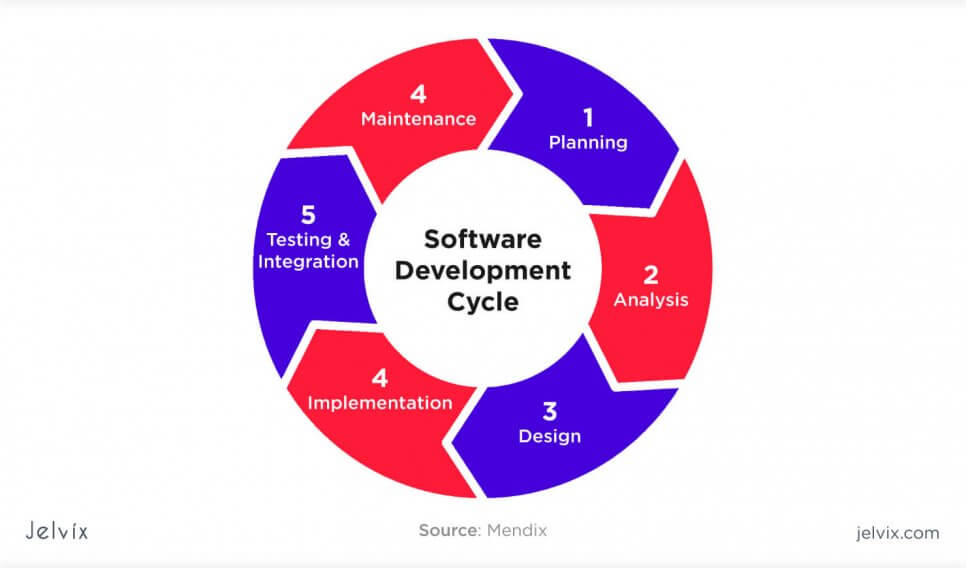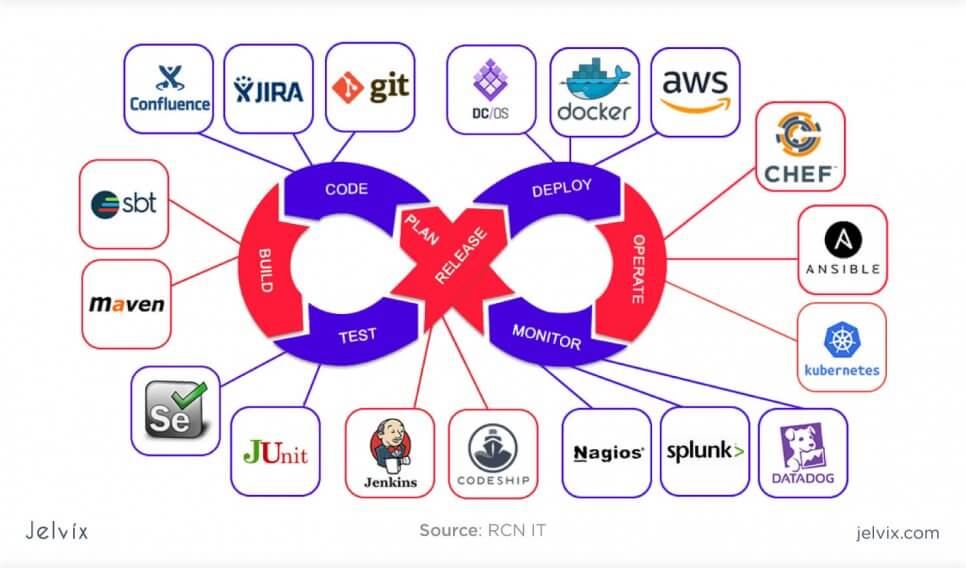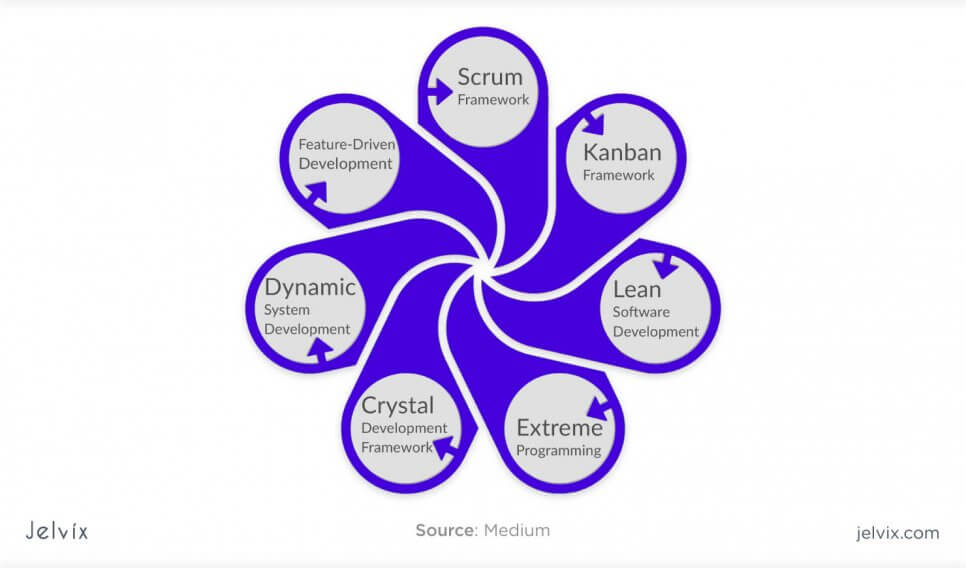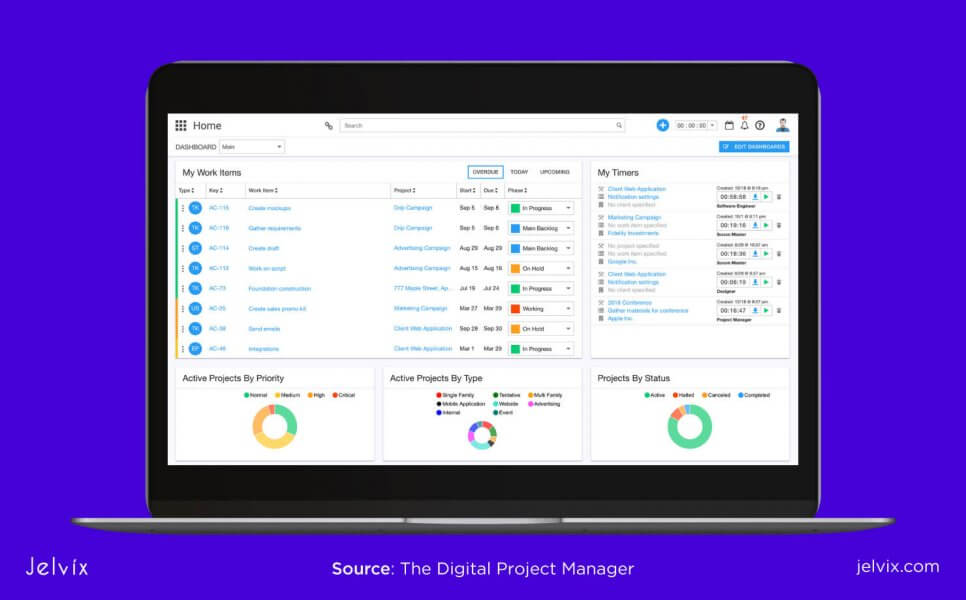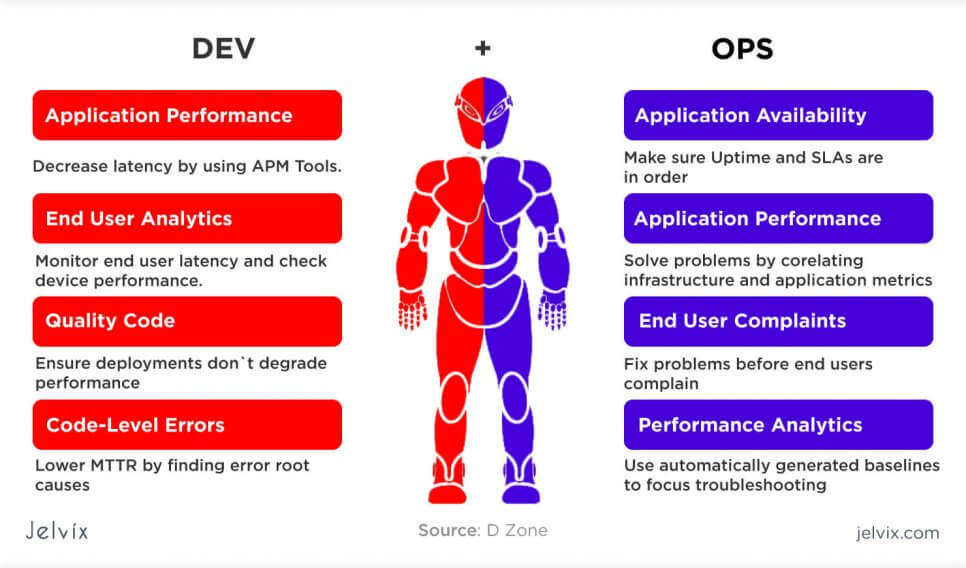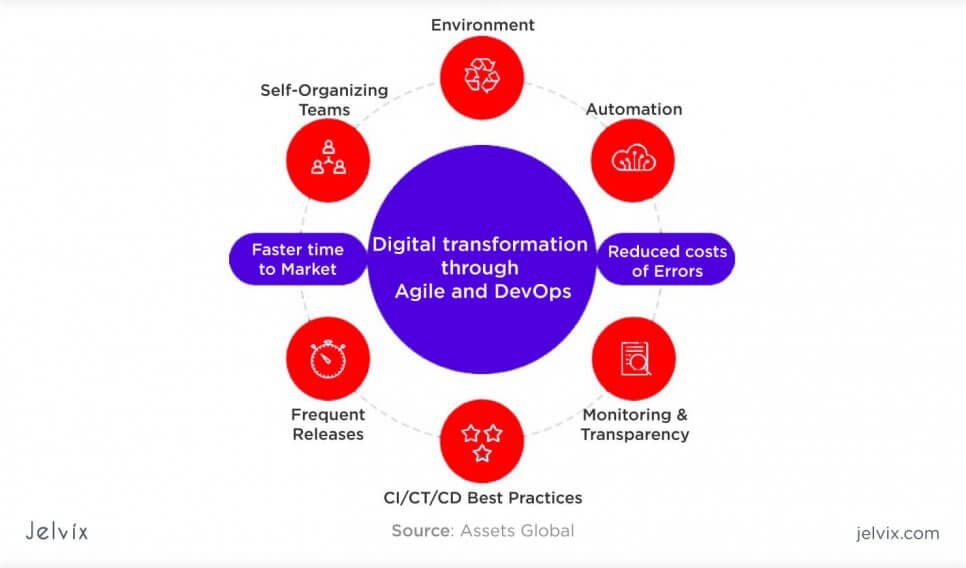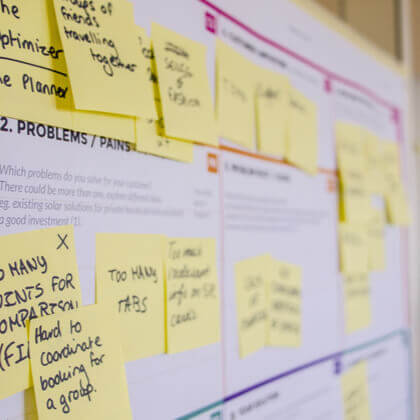DevOps and Agile were formed as standalone concepts, but now, the two terms are getting fused. It’s not a coincidence: practices of DevOps correspond well to the values that Agile preaches. One could exist without another in theory, but they are more commonly used in conjunction. In this blog post, we’ll examine crucial differences between Agile and DevOps and try to figure out why the two are connected so tightly.
Let’s go over definitions
Agile and DevOps may be used together, but they are not the same. Let’s take a look at textbook definitions and key aspects of both DevOps vs Agile before drawing lines between them.
Scope of Agile
Agile is an approach of software development that focuses on delivering small results faster rather than releasing one big interaction of the product. Software is developed in iterations: the team releases a new version every week or month with non-incremental updates. The workload, product requirements, cost estimates, and priorities get updated by the team as the project is moving along.
Key personas in Agile
The final goal of Agile is to deliver an optimal experience to the end-users – they are the ones at the core of the methodologies. The founders of Agile define user personas as a generalized portrait of a system user. Developers need to understand who will receive each new update and prepare new interactions according to the real feedback.
Since Agile is a user-oriented methodology, developers should be ready to change their software development plans and estimates if the user feedback calls for it.
Scope of DevOps
The term “DevOps” usually describes software development and delivery practices based on cooperation between software developers and operations specialists. The full team starts working on the project right after the product requirements were finalized. This way, the teams are no longer divided. Development and operation specialists share responsibility for the project, work on the same product development project, participate in ideation, and collect feedback.
The methodology has been one of the leading tech industry trends for years. The main DevOps benefits are delivering a simplified development process, minimizing the number of miscommunication, and rendering the full team responsible for the entire project.
Key personas in DevOps
DevOps is oriented towards making internal development and management processes easier. Similarly to Agile, this practice strives to develop a better product for end-users, but the main targets are team members, project managers, stakeholders, and product owners. For the latter, DevOps provides assurance that should something go wrong – the entire team will carry the responsibility for the issue.
Searching for a DevOps Consultancy? Jelvix provides DevOps services and helps organizations implement DevOps into their software infrastructure.
Differences between Agile vs DevOps
After going over definitions, you are likely able to pinpoint the key differences between the two concepts. Agile is, first and foremost, the management methodology, which heavily focuses on getting things done efficiently and quickly. DevOps, on the other hand, takes care of the technical side of the process, defining when teams join the project, what they build, and how they do it. However, there is much more to it when it comes to the difference between Agile and DevOps,
Focus on different participants
Agile focuses on optimizing communication between end-users and developers. The methodology helps teams be more reactive to feedback, deliver relevant updates, and quickly ship innovation to the market.
DevOps targets developers and operation team members. The goal of the method is to address gaps in cooperation between developers and DevOps engineers and assure better communication with product owners and stakeholders.
We can say that Agile is outward-oriented (towards customers), whereas DevOps is a set of internal practices.
Teams
Agile usually applies to software developers and project managers. In its normal state, it’s usually not extended to further product development stages. The team’s involvement after the finalization of the development state is limited.
The competences of DevOps engineers lie in the intersection of Development, QA, and Operations. They are involved in all stages of the product cycle.
- Discovery and Research stage – DevOps engineers analyze IT infrastructures and determine the necessary changes.
- Planning stage – DevOps specialists participate in outlining business, functional and non-functional requirements. They define the key priorities of the software infrastructure.
- Development stage – they participate in developing essential functionality, assure that the result responds to the requirements, and oversee the code quality.
- Development and testing stage – DevOps are responsible for software deployment, testing, and maintenance.
A successful product release is the responsibility of DevOps. They make sure the product is bug-free, all functionality has been correctly uploaded to the server, and there’s no tech debt. They are deeply invested in the end result, striving to create a commercially successful product, not just a clean codebase.
Applied frameworks
Agile uses a lot of management frameworks to achieve its flexibility and transparency:
- Scrum is a project management methodology that is focused on breaking the project down into small iterations. The tasks are performed in sprints and managed by a Scrum Master. The system was inspired by rugby and short-distance running because the project is effectively constituted by the series of short “runs”.
- Crystal is an Agile framework based on the belief that micro-management and excessive controls decrease the efficiency of software management projects. Teams decide by themselves which workflows they want to optimize and involve naturally. There’s no excessive documentation, conservative management practices, or fixed toolsets. Crystal’s main values are communication, accountability, and transparency.
- Dynamic Systems Development Method is a methodology that prioritizes the project’s flexibility and delivery speed over documentation and precise estimation. User testing is the key element of the system: workload planning is applied in use cases.
- Feature-Driven Development: the project is divided by features, so the team can focus on developing the essential functionality first, release the first version of the product and move on to the next iteration. FDD makes resource distribution easier, allowing developers to focus on one feature at a time.
DevOps focuses on development approach and collaboration but doesn’t offer specific methodologies. Instead, DevOps relies on tools, particularly for continuous integration and delivery. For management, teams usually use Agile and Scrum frameworks.
Feedback
In Agile, the main source of feedback is the end customer. In DevOps, the feedback from stakeholders and the team itself has a higher priority. However, this is not set in stone: if Agile DevOps are combined, then both internal and external feedback is equally valid.
Target areas
Agile focuses on software development more than on deployment and maintenance. The methodology is focused on how the product is created and how the process is managed. Once the solution is released, the Agile methodology is not relevant anymore.
DevOps focuses on software development as well, but its values and tools also cover deployment and post-release stages. The goal of DevOps is to integrate developers into deployment and release processes.
Team scope
In Agile, all team members should be able to switch between different tasks. The transparency of Agile helps all members to keep track of multiple processes and provide assistance if required. The goal of Agile is to build a flexible team where members can take each other’s places and adapt to new practices.
In DevOps, development and operation teams share the same goals, priorities, and use similar tools. Cooperation becomes easier, and this is something that Agile and DevOps share.
Communication methods
Agile teams often use Scrum to practically implement the values of Agile:
- The project is planned in sprints. Each task is defined in sprints, a particular time frame required to complete it. Sprints are usually 7-14 days, depending on task urgency and difficulty. The team meets on the first sprint day, assigns tasks for the sprint, evaluates priorities, and assigns people responsible.
- Daily stand-ups. The meeting lasts 10-15 minutes and is carried out on a daily basis. The team discusses their goals for the day, progress, and achievements. The meetings are usually held in the morning when team members need to discuss the tasks and plans for the day.
- Sprint Demo is the entire review of the sprint where the team discusses the progress made by the end of the week, updates project status and shares issues that came up during the sprint.
- Sprint Retrospective: team members and managers evaluate the week and define what was done right or wrong. It can be done during a demo meeting or organized as a separate meetup.
DevOps communication is focused less on management and more on product characteristics and design specifications. The team is focused on describing software requirements, hardware implications, and plans for future releases. DevOps communication can be combined with Agile.
The key distinction between the two is that DevOps focuses on the technical side of the project, whereas Agile strives to create a transparent, collaborative environment. The mix of the two is what makes the combination of the methodologies so efficient.
Documentation
Agile prioritizes flexibility and tasks at hand over documentation and monitoring. The team is supposed to be focused on first-priority tasks, making time for documentation when the workload frees up. Agile teams often regard documentation as a reason for slowing the project down. Obviously, essential requirements and processes are still documented, but without any necessity for detailed.
DevOps, on the other hand, regards project documentation as one of the essential project components. The process of documentation is largely automated: DevOps tools automatically record coding practices, developed features, test cases, measure product’s performance, team efficiency, etc. When DevOps and Agile are combined, teams prioritize automated documentation over manual, cutting time expenses.
Risks
Agile risks derive from the flexibility of the methodology. Agile projects are difficult to predict or evaluate as priorities and requirements are continually changing. This leads to several critical issues.
- Low predictability. Developers cannot guarantee precise deliverables for every project stage. Agile project teams may have to navigate between different stages, returning to previously accomplished tasks, which may stall the project’s overall progress.
- Time expenses due to increased communication. High commitment, regular meetings, and personal conversations sometimes take lots of attention from coding. Developers need to learn to distribute their energy properly and find the least taxing cooperation method.
- Lack of documentation. Agile teams might miss crucial details and forget to document important best practices. This saves time in the short run but makes the maintenance harder in the long-term perspective. Automated documentation and smart recording software is a simple fix here.
- A project can change its direction unpredictably. If the user feedback was interpreted in a wrong way, developers might start working on some wrong features or release an unnecessary update.
DevOps risks derive from a misunderstanding of the term and the lack of suitable tools. Some people see DevOps as a collection of software for deployment and continuous integration, failing to change the underlying structure of the development process. Let’s take a closer look at the main issues that organizations face during DevOps transition.
- Team miscommunication. Team members often don’t understand what DevOps require from them. Some people will expect DevOps teams to cooperate on every task while the QA team might have a different opinion. Others think using CI/CD tools isn’t an essential component of DevOps, whereas some will prefer particular DevOps tools.
- Team management issues. DevOps, in its nature, is a methodology with a focus on the technical side of the project. This is why many project managers and architects start their transition to DevOps with access to virtual machines, CD/CI software permissions, and reformed tech practices. However, DevOps should take HR-processes into account and unify practices of communication, team-building, feedback, and management.
- Ignoring hierarchy: DevOps is designed to bridge the gap between teams, letting them cooperate on equal terms. However, breaking walls between developers and operation specialists doesn’t mean removing governance altogether. Teams need to have clear authority and powerful management that oversees the collaborative processes.
The tools used
Agile tools are focused on management, communication, collaboration, metrics, and feedback processing. To get a better idea, let’s take a look at the most popular Agile tools on the market.
- SCRUM tools: since Scrum is the most used methodology for Agile implementation, it makes sense that Scrum tools are among the most actively used ones. Teams use Jira and Trello to plan sprints, assign responsible team members, track progress, cooperate, and exchange results.
- Communication: Agile teams use Skype, Slack, Discord, Zoom for daily meetings, chats, and reports.
- Collecting feedback: Agile is focused on collecting insights from users, which is why survey tools are indispensable for Agile teams – such as SurveyMonkey, Google Forms, and SurveyGizmo.
DevOps uses tools for team communication, software development, deployment, and integration. This type of software focuses more on facilitating the process of development, automation, code sharing, and real-time collaboration – and less on management and planning.
- Continuous deployment tools will be in use here since we are talking about a process of constantly releasing new software iterations on the server and regularly updating the product, rather than releasing one big update over a prolonged period of time. Managing frequent small releases can be time-consuming. Jenkins, Buddy, and other CD tools make the process easier by offering ready-to-use plugins, automation tools, and pre-saved release settings.
- Continuous integration tools: CI is a process where many developers edit a single codebase simultaneously. This practice increases development speed, transparency, and facilitates communication. Developers don’t have to re-update the code base all the time or exchange multiple versions. To make this possible, teams use CI environments that support multi-user interfaces and execute real-time code base updates. The most popular platforms are BitBucket, AWS CodePipeline, Azure Pipelines.
- Continuous testing tools: CT is a core practice in DevOps, which requires operation teams to test the product early-on, on all devices, all the time, and automate as much as possible. Testing is an integral and continuous part of the project. Tools, therefore, focus on automation, peer-to-peer access, real-time updates, and documentation. The most popular ones are Katalon Studio, Appium, Selenium, and others.
Reasons to combine Agile and DevOps
Even though Agile and DevOps have slightly different focuses and scopes, the key values are almost identical. Both methodologies prioritize flexibility and collaboration, integrate testing and feedback quite early in the development process, and prioritize small updates over one-time incremental releases. With such similarities, it makes sense that the two methodologies can be combined, and the relationship between Agile and DevOps offers a lot of benefits to the team, product owner, and main user.
- Combination of flexible management and powerful technology. Agile provides DevOps a suitable environment for building and releasing faster, encourages transparent communication, and provides a framework for project planning. DevOps, on the other hand, makes Agile communication more efficient with its focus on automation and real-time collaborative development.
- Connecting DevOps to end-users and business owners. Using Agile practices helps DevOps teams to communicate their priorities more efficiently. The focus on collecting end-users’ feedback contributes to higher product quality, while the use of Scrum and Agile communication tools help keep product owners in the loop.
- Increased visibility. Implementing transparent continuous development and testing environments will not help if the management strategy doesn’t follow the same principle. By adopting Agile, DevOps bring visibility not only to the process of the development itself but also to planning, rewarding, communication, and decision-making.
- Strengthening the team. Agile focuses not only on improving product quality and project efficiency, like DevOps, but also stands for long-term aspects, like teamwork, mutual understanding, healthy communication. Adopting Agile practices will improve collaboration, increase the team’s motivation, and decrease employee turnover rates.
- Better product quality. Agile allows coming back to previous product development stages to fix errors and prevent the accumulation of technical debt. This approach aligns well with the values of a flexible DevOps methodology.
Agile provides DevOps with a methodology with flexible management and communication that stands for the same values. More set-in-stone approaches like Waterfall might not be able to accommodate DevOps’ flexibility and transparency.
For Agile, DevOps is a grounded technical approach. An Agile team will definitely benefit from increased cooperation between developers and operation teams. Also, continuous development, deployment and integration allow releasing products in small iterations, which is one of Agile’s main priorities.
How to adopt Agile and DevOps simultaneously?
Agile and DevOps provide a perfect combination of values and technical tools for building a flexible development, testing, and deployment process. If you want to combine the two, instead of considering Agile vs DevOps, in your team, you can start adopting the practices of two methodologies simultaneously – and here’s how.
Step 1 – Unite the development and operation teams
DevOps advocates for bringing all team members closer, removing the gap between developers and operation specialists. Introducing two teams to each other on the same workflow is the key step to DevOps and Agile adoption.
- Choose a project where both teams will cooperate during the very first stages of a product development cycle.
- Discuss your DevOps and Agile practices with product owners: stakeholders should be aware of transitions in the company.
- Start small: experimenting on small-scale projects decreases financial and reputational risks.
- Educate team members: each person on the newly formed big team should be aware of what another member is doing, regardless of whether they share a specialty or not. Hold regular meetups and lectures where members talk about their fields and daily tasks.
- Clearly define the project role of each team member. Every participant should be able to describe his work scope in a few words.
Step 2 – Create build-and-run teams
If your development teams have never run their own software before, you need to help them adapt to new practices and educate them on deployment. Each developer should know how exactly the product will be uploaded to the server, understand release requirements, and the process itself.
- Developers should understand that from now on, they will be able to influence the release process. They will have more control over the project and final results, but also, they will be held accountable for potential technical issues. DevOps will bring more power along with new responsibilities.
- The operations team should be familiar with development concepts and processes. They will participate in the development project while monitoring the code quality and giving insights regarding the product’s speed and performance.
- All development and operational concerns are discussed by the entire DevOps team.
In DevOps the distinction between build and run stages disappears, and teams are expected to contribute their expertise during the entire project duration. This strategy keeps every member involved and allows them to share responsibility.
Step 3 – Change your approach to sprints
The key challenge for teams that have already adopted Agile is to adapt the management process to DevOps values and requirements. The first step is to change your approach to sprints.
- Invite operations team members to development pints;
- Discuss deployment and operations during your sprints and grant all participants access to Ops tasks;
- Assign priority ratings to operations tasks by the same scale that you use to grade development projects;
- Encourage development and operations teams to exchange their opinion on other team’s workflow and possible issues.
Two teams should participate in sprints together and take an active interest in what other members are doing. This can come off forced in the beginning, but the integration will soon become more natural.
Step 4 – Include QA in all development stages
Quality assurance should be started early on, right after the product requirements were approved. Testing first is a key value for DevOps. You need to encourage DevOps specialists to participate in first sprints and adopt continuous testing tools.
Step 5 – Choose the right tools
You need to choose communication, management, and monitoring tools for Agile adoption. Tools like Trello and Jira allow the teams to keep development and testing transparent, bringing teams together. Additionally, you should apply DevOps tools for continuous delivery, deployment, and integration. You can choose one tool at a time – there’s no need to burden your team with dozens of platforms right away. With the right software, you will easily navigate through Agile DevOps challenges.
Step 6 – Automate everything
Developers and testers will now have to spend a lot of time on communication and collaboration. They need to talk to each other, collect user feedback and communicate regularly with product owners and stakeholders. It’s likely that the time expenses will grow, and team members might not be able to perform their key work.
Automation allows increasing team efficiency, saving their time, and preventing burn-out. DevOps tools offer pre-set templates, built-in algorithms, and automation features for development and testing. You can hire an architect early on who will build the foundation for automation.
Step 7 – Measure and control
Agile projects don’t prioritize documentation the same way that Waterfall does. It’s easy to lose sight of your project and forget about the important deliverables. At the end of the day, some team members may end up under-delivering, while others will be overloaded with work.
Additionally, as the team size increases, keeping track of everyone’s efficiency will be harder. This is where Agile and DevOps metrics come in. By using tangible numeric deliverables, you can always understand the direction of your project and its current progress. You can take a look at our detailed list of Agile metrics with a rundown of the basic ones:
- Time for release: how much time the team took for the product’s development and deployment;
- Release numbers: how many iterations a team released over a given period of time;
- Detected errors: how many mistakes the team identified and fixed.
Most Agile management tools have built-in automated monitoring features. The software automatically calculates the number of fulfilled sprints, released interactions, and code errors. DevOps tools focus on measuring deployment and integration progress, measuring code quality, and assessing collaboration efficiency.
Conclusion
The main advantage of combining Agile and DevOps is the variety of tools, methods, and mindsets that you get at your disposal. Agile is focused on management, communication, and internal processes, whereas DevOps encourages your team to change the perspective on the development, testing, and deployment process. Both Agile and DevOps strive to help build a better product, and a combination of both is a powerful way to achieve this goal faster.
In reality, Agile and DevOps share a lot more similarities than differences, which is why, for many DevOps teams, using Agile is a given – and vice versa. So, if you are considering switching to Agile, think about implementing DevOps as well.
At Jelvix, we help organizations adopt Agile and DevOps in their teams. We share our experience in transferring teams from set-in-stone mindsets to flexible methodologies. Our clients get full guidance, technological expertise, and full support from the project’s initial stages to post-release maintenance. If you are looking for Agile and DevOps experts that can guide you through the shift, contact our DevOps team. We’ll get back to you with real insights and examples so that you can kick start your journey.
Need help?
Use our talent pool to fill the expertise gap in your software development.



